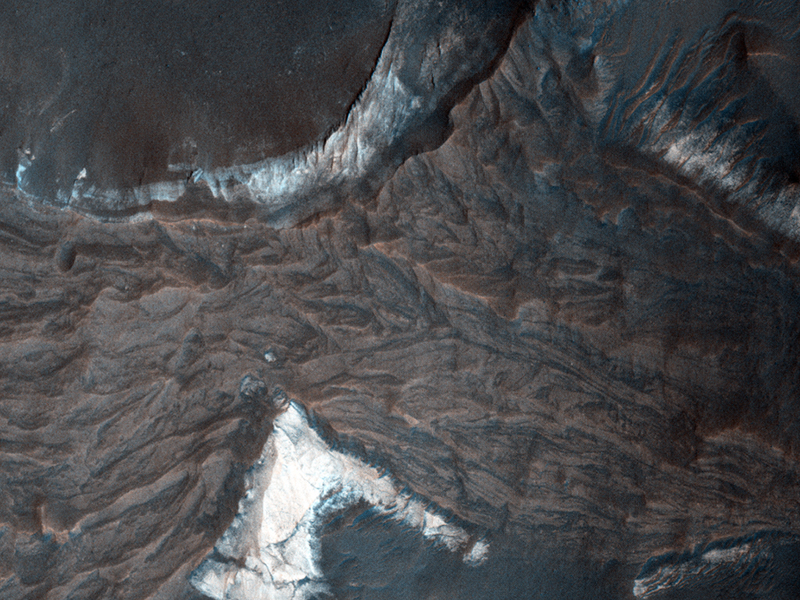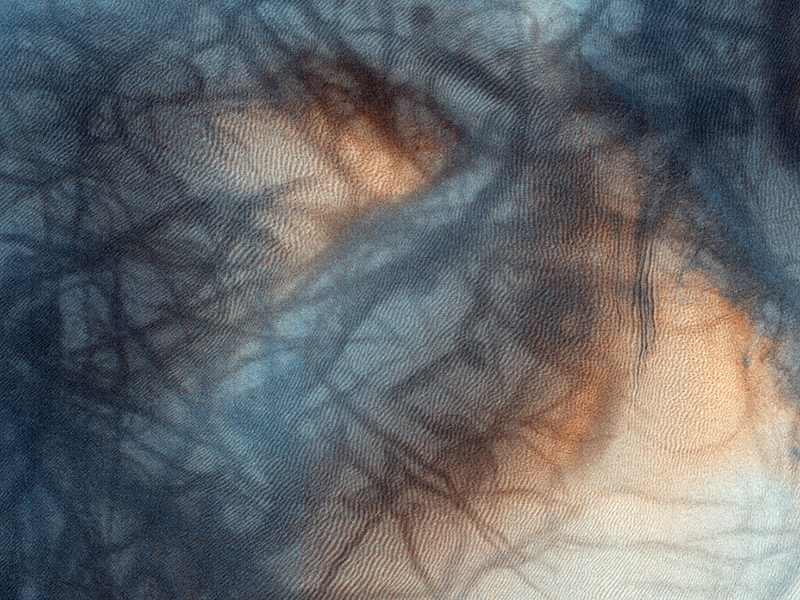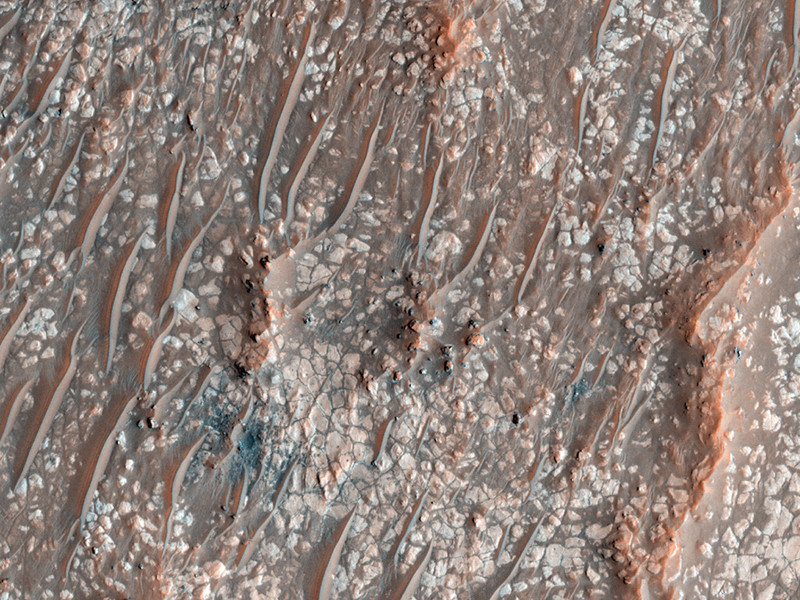HiRISE Science Team wrote:Layers on East Mound of Terby Crater (ESP_021797_1520)
This observation was taken to analyze sedimentary architecture and bed thicknesses of layered deposits on the east side of the mound of Terby Crater.
This area could be a possible science target for future landed missions, so the power of HiRISE can analyze these layers at highest resolution possible.
Terby Crater is 170 kilometer in diameter, and is located along the northern edge of Hellas Planitia.
HiRISE Science Team wrote:Of Swirls and Gullies (ESP_021899_1095)
This observation is a repeat image of ESP_014185_1095 and ESP_019987_1095. The dune gullies (at edge of the field and here in this subimage) appear active and are anomalous in their location (high latitude).
Tracking definitive changes will be useful in comparison with dune gully activity visible in southern mid-latitudes and Northern Polar erg. The activity is thought to occur soon after the beginning of the defrosting period.
Perhaps the most striking aspect of this observation are the beautiful swirls of tracks left by dust devils. Like on Earth, dust devils move across the Martian surface, exposing the underlying darker material.
HiRISE Science Team wrote:Detecting Olivine Near Noachis Terra (ESP_021971_1505)
This observation show the bedrock on the floor of a crater near Noachis Terra. This crater is unique because it has been very well characterized as being olivine rich.
Olivine is a magnesium-iron silicate that is very common on Earth, particularly in the mantle. While the large scale morphology of these craters is well characterized, this is not the case with fine scale layering and fracturing. Understanding these morphologic characteristics in craters could help describe large scale crustal processes on Mars, including the genesis of magmas and the creation of regolith.
There are other regions of Mars that are also rich in olivine. Olivine turns into other minerals in the presence of water, so scientists are interested in looking for those minerals as well.
Credit: NASA/JPL/University of ArizonaSharon Wilson wrote:Banded Terrain in Hellas Planitia (ESP_022312_1400)
Hellas Planitia is the vast interior of the largest enclosed impact basin on Mars. Hellas is located in the Southern highlands and formed very early in the planet's history.
The deepest place in Hellas, and on Mars, is in the northwestern interior of Hellas. This observation shows an example of banded terrain that is common throughout this low-lying region.
The origin of this unique terrain exhibiting complex flow patterns is still under debate, but may be related to ductile deformation caused by large stresses that caused the material to bend and fold. The subimage shows large boulders that are eroding from scarps at the southern end of the image (lower right is downhill).
<< Previous HiRISE thread



